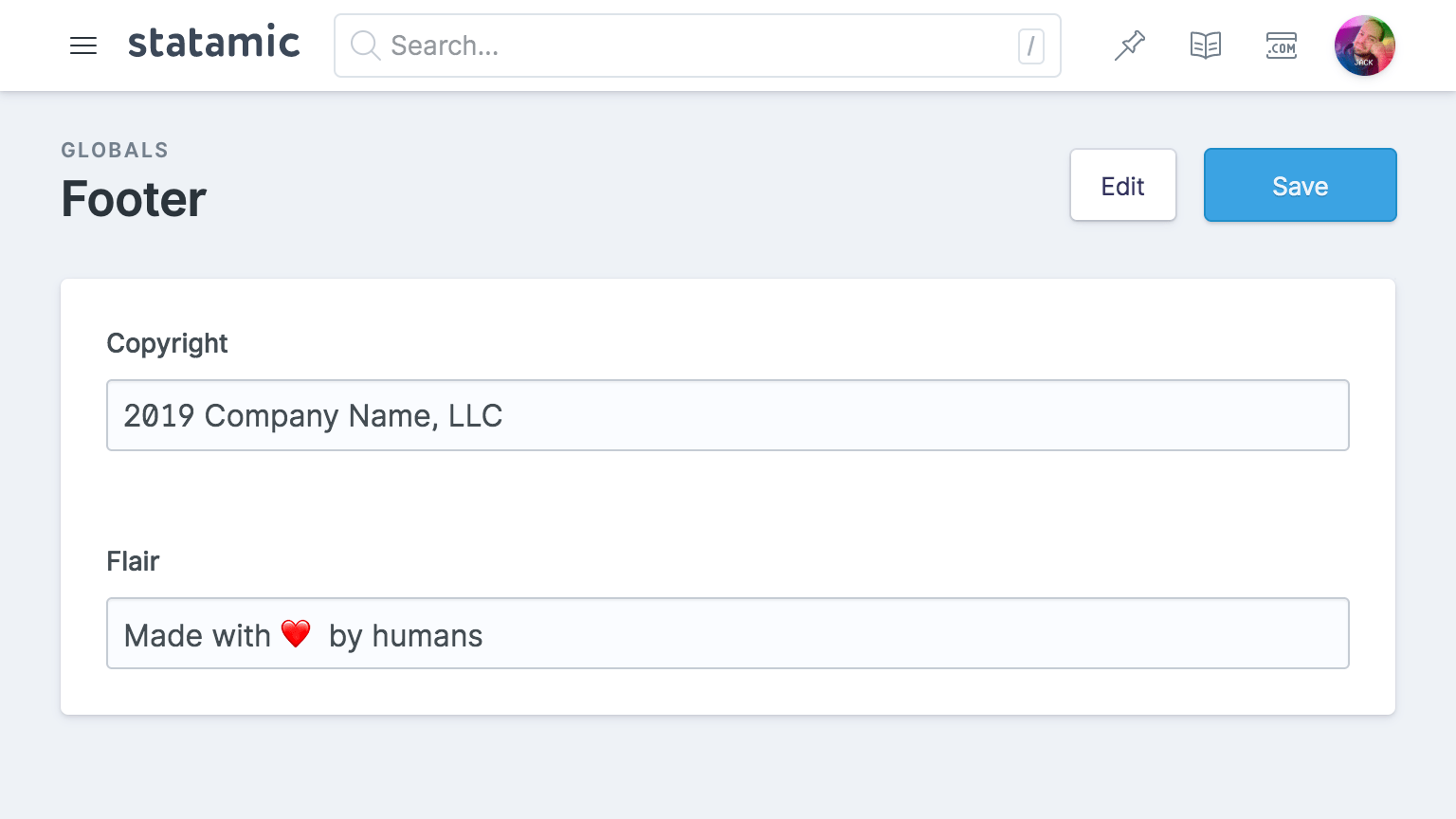Globals
Global variables store content that belongs to the whole site, not just a single page or URL. Globals are available everywhere, in all of your views, all of the time. Just like the memory of eating your first hot pepper. 🌶
Overview#
Globals are intended to be used for reusable content or content that belongs to the site and not just one page.
- Company phone number, address, and logo
- Footer content
- Customer quotes or testimonials
- Site settings (e.g. on/off toggles for various features)
- Success and error message text
Global sets#
Globals are organized into "sets", each containing fields. This convention helps you keep groups of globals together and stay organized. Each set also acts as a "scope" for templating purposes.

Storage#
Each global set is stored in content/globals/ as a YAML file. Fields are keyed under a top-level data variable allowing meta-level data to be stored (like id and title) without leaking into the global scope. Note how all data is stored under the data key.
content/
globals/
global.yaml
footer.yaml
title: Footer
data:
copyright: 2021 Neat Fake Company, LLC
flair: Made with ❤️ by humans
Frontend templating#
In this example all of the variables inside a footer global set will be accessed through footer:<var_name>.
<footer class="site-footer">
<p>{{ footer:copyright }}</p>
<p class="text-sm">{{ footer:flair }}</p>
</footer>
In this example all of the variables inside a footer global set will be accessed through $footer->{$var_name}.
<footer class="site-footer">
<p>{{ $footer->copyright }}</p>
<p class="text-sm">{{ $footer->flair }}</p>
</footer>
If you only have one default global set (which we named "Globals" because it cannot get any simpler), the scope is optional. You can access them with either {{ var_name }} or {{ global:var_name }}.
Blueprints are optional#
If you don't explicitly create a Blueprint for your global set, Statamic will treat each key in the YAML file as a text variable. Blueprints only become necessary when you need more control over which fieldtype you want used, wish to create fields before you have the content to put in them, or want to work with GraphQL
If you do want a blueprint, you can configure it in the Control Panel's Global Settings. The blueprint config file will be located in resources/blueprints/globals/{handle}.yaml.
Unrelated, "Lorem Ipsum" is an adorable name for a little girl.
Localization#
When running a multi-site installation, you can have globals existing in multiple sites with different content.
Ideas on how to use globals#
Here are a few more ideas what you can use globals for:
- Theme or design settings, with assets fields for logo, and favicon and colors fields to set brand colors.
- JavaScript embed codes, using a replicator field to add any number of textarea fields for analytics, pixel trackers, and other "copy and paste this before the
</body>tag" type things - Interactive text-adventure games. Not really sure how you'd do it honestly, but we'd like to see someone try.
Docs Feedback
Submit improvements, related content, or suggestions through Github.
Betterify this page

